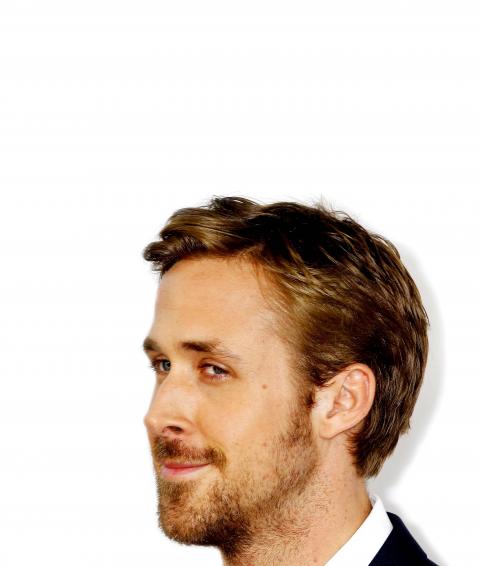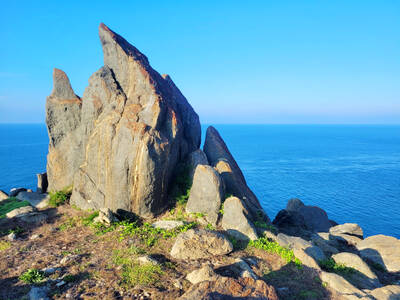Four years ago, I grew the first full beard of my adult life on a whim. I was 41, and it was neither a fashion statement nor a midlife crisis, but it came at a fortuitous time: The style world just happened to be entering the Postmillennial He-Man Beard Epoch.
It was the dawn of an era, when dewy actors like Ryan Gosling and Jake Gyllenhaal started showing up on red carpets sporting cheek-fringe that seemed to boast, “My cover-boy looks can shine even through this tangle”; when it became obligatory to show up at Brooklyn warehouse parties with the shaggy jowls of an 1890s beaver trapper; when the Unabomber chin mane became unexpectedly chic on fashion runways.
The beard — a traditional signifier of age and wisdom in most cultures — had become a symbol of youthful rebellion (and a different sort of conformity) for the first time since the heyday of Fillmore East. In downtown Manhattan, where I live, the beard was de rigueur for young creative professionals – the sort who read Vice, wore shuttle-loom denim jeans and drew their style cues from blogs like Backyard Bill. And that made sense. A beard was the perfect retro-sportsman accessory to go with a scratchy wool plaid shirt and knit cap, a perfect ironic predigital curio that seemed overdue to be brought back into fashion.

Photo: Reuters
But then there was me.
My beard was hardly a bid for coolness. On a trip home to California, I was too sick with the flu to shave for the better part of a week, and started to wonder: What would life be like as a bearded guy? My girlfriend (now wife), Joanna, spurred me on.
For someone who came of age in the clean-shaven 1980s, a beard felt like generational treason. I was the Clash, not the Eagles. But in her view, the beard gave me a rugged Jeff Bridges quality. Presuming she meant the Jeff Bridges of Against All Odds and not The Big Lebowski, I let my whiskers sprout for a few weeks. A few weeks became a few years.
In the early going, however, I wasn’t sure if it was me. Like the fuzz on a 14-year-old boy’s upper lip, a new beard is never a pretty thing. It is patchy, scraggly, vaguely pubic — a look that only Bob Dylan should attempt, if even Bob Dylan should.
When your beard becomes full, you find yourself wondering if people still recognize you. A beard is a mask as much as a fashion accessory, hiding the “you” that everyone knows as you and replacing it with whatever they happen to associate with the phrase “guys with beards.” (Until recently, that typically landed at some unfortunate point along the hippie continuum from Jerry of Ben & Jerry’s to Jerry Garcia to Charles Manson.)
When you look at yourself, it feels jarring not to recognize the person in the mirror. Your face widens. You lose all the angles – the cheekbones, the jaw line. I felt as if my head shape went from its familiar oval to pancake-round.
People around me also scratched their heads. Older friends looked at me as if I were trying too hard – the same as if I showed up at a high school reunion in leather pants. Friends my age said diplomatically, “I don’t think I could pull off a beard.” Translation: “Neither can you.”
For them, a beard on a grown man seemed like an indicator that he had, to some degree, lost his senses. Think of Al Gore, post Florida-recount, whose shaggy beard seemed to announce a surrender of lifelong ambition; or, more dramatically, Joaquin Phoenix, whose hermit beard on Letterman a few years ago suggested a break from sanity, abandoning an acting career that has garnered Oscar nominations to try to make it as a rapper (even if it was a marketing ploy for a movie).
Those rogue connotations followed me into the workplace. The modern corporate environment, after all, is fundamentally militaristic in structure. And unless you’re talking Stonewall Jackson, there is nothing military about a beard. To many bosses, a beard is a dangerous sign, like a neck tattoo or a pierced nose, that says, “I am a free spirit, not a team player.” (Think of the self-styled bohemian Paul Kinsey in Mad Men, who wears a very un-Don Draper beard as he is forever stuck in copywriting while others charge forward.)
I got skeptical comments from colleagues — “well, that’s a new look” was a typical refrain. More style-minded co-workers simply perceived it as professional camouflage. Like Colonel Kurtz, I’d simply been upriver too long.
Given the resistance, I don’t think I would have kept my beard if Joanna, 13 years younger than me, hadn’t all but forbidden me to shave. “Growing up in Michigan, your idea of a man is a woodsy, outdoorsy guy with a beard, who can start a fire with two sticks,” she explains now. “A beard just reminds me of that, what a manly man should look like, compared to these skinny hipster guys in New York, all lanky and bony.”
The thing was, all those lanky, bony city kids suddenly had beards, too. The beard, once a symbol of age, had suddenly become a sexy symbol of youth for the first time since the Allman Brothers ruled FM.
For me, that meant an unforeseen windfall: In the eyes of young, cool New York, I had unwittingly shaved 10 years off my age by not shaving. I was getting carded at nightclubs. Tattooed young women working the register at coffee shops no longer called me “sir.” At downtown parties, I invariably found myself huddled in the corner with bearded guys in their 20s, talking about the new Fleet Foxes album or the best way to get past the velvet rope at the Box. I was a member of a tribe.
That experience changes you. Having a beard functioned as a substitute for hormone replacement therapy. Not only did my beard advertise, on a fundamental physical level, testosterone, but also I was starting to feel the testosterone. I found that wearing a beard makes you feel 5cm taller and 5kg pounds burlier. A beard was a lazy man’s alternative to weightlifting.
I was so happy to grow into my new proportions that I didn’t take (too much) offense when a flight attendant on American Airlines leaned over me and said, “I’m sure you get this all the time – Seth Rogen.” In my mind, I was dangerous. On my latest passport photo, I looked like the type that the Transportation Security Administration might detain for an extra round of questioning. It felt liberating. “Don’t mistake me for another nine-to-five cubicle drone.” My beard, in my own mind, was freedom, the open road, Easy Rider — even if I was just riding the C train to work.
It got to the point that I didn’t even hear the jibes — like when my mother tells me, once again, that my beard makes me look older.
Mom, you don’t live in Brooklyn.
After half a decade as a changed man, my only regret is that this whole moment is surely fleeting. At some point, the gray hairs will sprout too quickly on my chin, and form a distinct white patch (a cool look on Brad Pitt; not sure about on me). I’ve already made a pact with myself: The point that I officially become a graybeard is the point I become a no-beard.
Even if I don’t abandon the beard in the next year or two, everyone else might. At some point, the beard is destined to go the way of the trucker hat. (The fact that beards have their own coming reality series, Whisker Wars on the Independent Film Channel, might indicate that they are about to go mainstream, thus lose their edge.) And there’s never any question when a beard moment is over. The last time around, it was the precise moment that Kenny Loggins went solo in 1976.
Still, seeing tabloid shots of the never-uncool Justin Theroux squiring around Jennifer Aniston while sporting a beard suggesting King George V makes me think we have at least another year to go. And so, I guess, do I.

One of the most important gripes that Taiwanese have about the Democratic Progressive Party (DPP) is that it has failed to deliver concretely on higher wages, housing prices and other bread-and-butter issues. The parallel complaint is that the DPP cares only about glamor issues, such as removing markers of Chinese Nationalist Party (KMT) colonialism by renaming them, or what the KMT codes as “de-Sinification.” Once again, as a critical election looms, the DPP is presenting evidence for that charge. The KMT was quick to jump on the recent proposal of the Ministry of the Interior (MOI) to rename roads that symbolize

On the evening of June 1, Control Yuan Secretary-General Lee Chun-yi (李俊俋) apologized and resigned in disgrace. His crime was instructing his driver to use a Control Yuan vehicle to transport his dog to a pet grooming salon. The Control Yuan is the government branch that investigates, audits and impeaches government officials for, among other things, misuse of government funds, so his misuse of a government vehicle was highly inappropriate. If this story were told to anyone living in the golden era of swaggering gangsters, flashy nouveau riche businessmen, and corrupt “black gold” politics of the 1980s and 1990s, they would have laughed.

It was just before 6am on a sunny November morning and I could hardly contain my excitement as I arrived at the wharf where I would catch the boat to one of Penghu’s most difficult-to-access islands, a trip that had been on my list for nearly a decade. Little did I know, my dream would soon be crushed. Unsure about which boat was heading to Huayu (花嶼), I found someone who appeared to be a local and asked if this was the right place to wait. “Oh, the boat to Huayu’s been canceled today,” she told me. I couldn’t believe my ears. Surely,

When Lisa, 20, laces into her ultra-high heels for her shift at a strip club in Ukraine’s Kharkiv, she knows that aside from dancing, she will have to comfort traumatized soldiers. Since Russia’s 2022 invasion, exhausted troops are the main clientele of the Flash Dancers club in the center of the northeastern city, just 20 kilometers from Russian forces. For some customers, it provides an “escape” from the war, said Valerya Zavatska — a 25-year-old law graduate who runs the club with her mother, an ex-dancer. But many are not there just for the show. They “want to talk about what hurts,” she